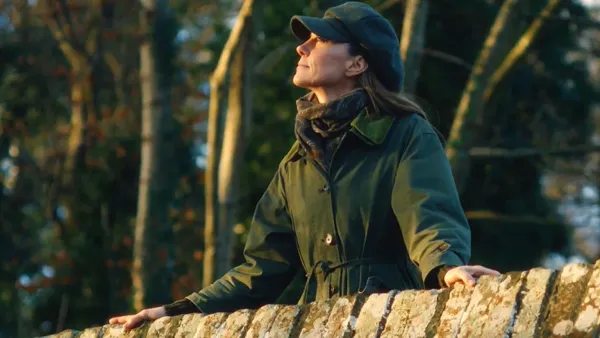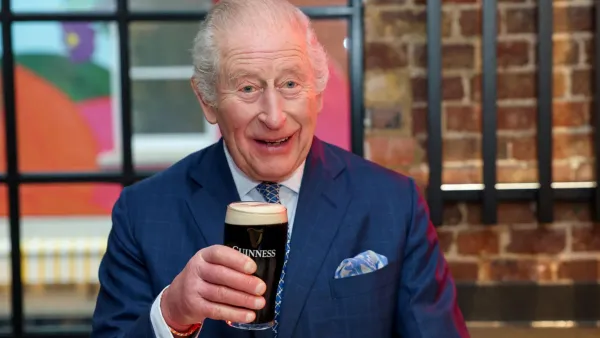Royal Household Publishes 2024-25 Sovereign Grant Report: Comprehensive Analysis of the British Monarchy's Finances and Operations

The Royal Household has published its annual financial statement for 2024-25, providing unprecedented transparency into how the monarchy is funded and operated during a year marked by health challenges but continued constitutional duties and major infrastructure investments.
This is a very 'nuts and bolts' look at how the British Royal Family is paid for and what it actually does on a day-to-day basis. It might not interest everyone, but since it really interests me, I figured it would interest some of you.
One thing is clear, when you look at everything the Royal family does, it represents phenomenal value for money. I should also add, that this report does not cover the King's personal, private wealth.
Understanding the Sovereign Grant System
The Royal Family is not funded by taxpayers' money. Instead, the Sovereign Grant operates through a unique arrangement dating back to 1760, when King George III surrendered the Crown Estate's profits to Parliament in exchange for a fixed income.
How the Funding Works:
- The Crown Estate (a property portfolio including prime London real estate and offshore wind farms) generates profits for the Treasury
- 12% of Crown Estate profits from two years prior become the Sovereign Grant (reduced from 25% in 2024-25 following The King's request that additional offshore wind revenues benefit the wider public)
- The £86.3 million for 2024-25 was calculated from Crown Estate profits of £442.6 million in 2022-23
- Any surplus goes into the Sovereign Grant Reserve, which can be drawn upon in future years
- If the reserve exceeds 50% of annual expenditure, future grants can be reduced
This system means the monarchy's funding fluctuates with the Crown Estate's commercial success, creating a direct link between property performance and royal finances.
The Crown Estate generated £442.6 million in profits two years ago, and twelve percent of that sum—£86.3 million—flowed into the Sovereign Grant for 2024-25. It's a percentage deliberately reduced from 25% at The King's own request, ensuring that the bonanza from offshore wind development benefits the Treasury rather than the royal household. In effect, the monarchy's restraint saved the public purse tens of millions.
This isn't charity money or taxpayer funding—it's the dividend from what amounts to a centuries-old business arrangement. The Crown surrendered its vast estates to Parliament in exchange for a guaranteed income, and that income fluctuates with the commercial success of properties that include Regent Street, much of St James's, and swathes of seabed that now bristle with wind turbines.
The Sovereign's Constitutional Roles and Costs
The Sovereign Grant funds two distinct constitutional roles that cannot be separated from the person of the monarch:
Head of State Functions
The King's role as Head of State involves constitutional duties that cost significant resources:
Parliamentary and Government Duties:
- Opening and dissolving Parliament
- Giving Royal Assent to legislation
- Weekly audiences with the Prime Minister
- Appointing senior officials on ministerial advice
- Cost: Included in core operating expenses of £51.8 million
Diplomatic Activities:
- State Visits: Two major incoming visits (Japan and Qatar) plus outgoing visit to Australia/Samoa
- Ambassador Credentials: 35 audiences with incoming diplomats, 27 with outgoing UK diplomats
- International Relations: 187 constitutional audiences throughout the year
- Cost: Australia/Samoa trip alone cost £400,535
Head of Nation Responsibilities
Beyond constitutional duties, The King serves as Head of Nation, fostering unity and recognizing achievement:
Public Engagement:
- 604 engagements by The King and Queen (90 joint)
- Over 1,900 total engagements by all working royals
- 828 events hosted at royal palaces welcoming 93,669 guests
- Cost: Events and hospitality budget of £3.2 million
Honours and Recognition:
- Multiple investitures recognizing public service
- Garden parties celebrating community contributions
- Patronages supporting over 1,000 organizations
Detailed Financial Breakdown
Total Expenditure: £106.7 million
The Sovereign Grant covered comprehensive royal operations:
Payroll and Staffing (£34.0 million total):
- 539 full-time equivalent staff (average)
- £29.9 million in direct payroll costs
- £4.1 million in additional staff costs (agencies, training, recruitment)
- Staff range from constitutional advisers to palace maintenance workers
Property Maintenance (£41.2 million):
- £17.6 million for general estate maintenance across all royal palaces
- £23.6 million for Buckingham Palace Reservicing Programme
- 76 major projects completed across the estate
- Includes everything from roof repairs to fire safety upgrades
Travel Costs (£4.7 million):
- £1.6 million on helicopter operations
- £0.2 million on large fixed-wing aircraft
- £1.4 million on small aircraft charters
- £0.5 million on scheduled flights
- £0.6 million on rail travel (including Royal Train operations)
Utilities (£6.0 million):
- £2.6 million electricity (despite renewable energy certificates)
- £1.1 million natural gas
- £1.9 million rates and council tax
- £0.4 million water
Digital Services (£4.5 million):
- Cybersecurity programs (achieved Cyber Essentials Plus certification)
- IT infrastructure supporting 539 staff across multiple locations
- Digital communications reaching 1.3 billion social media impressions
Income Generation: £21.5 million
The Royal Household actively generates income to supplement public funding:
Visitor Revenue (£10.5 million):
- Facilities management charges from Royal Collection Trust
- Record visitor numbers to Buckingham Palace Summer Opening
- 10,735 visitors to new East Wing tours
- 646,902 total visitors to Buckingham Palace
Property Rental (£4.0 million):
- Commercial tenants across royal estate
- Residential lettings in appropriate properties
Service Recharges (£7.0 million):
- Shared services provided to other royal households
- Catering and events management for external clients
- Professional services including security and IT support
Major Projects and Achievements
Buckingham Palace Reservicing Programme
This £369 million, 10-year project is 72% complete (£266.5 million spent):
2024-25 Accomplishments:
- 14,100 meters of permanent electrical cabling installed
- 20,000 meters of permanent mechanical pipework laid
- Two new lifts constructed in West Wing for improved accessibility
- East Wing completed and opened to public for first time in history
- Fire safety systems upgraded throughout palace
⠀Programme Benefits:
- Heritage Protection: Reduces fire and flood risks significantly
- Public Access: East Wing tours generated substantial visitor revenue
- Operational Efficiency: 1,400m² of additional operational space created
- Environmental Impact: 554 tonnes annual carbon savings when complete
- Skills Development: 82 apprentices, graduates, and work experience participants
- Economic Impact: 82% of contracts awarded to small/medium enterprises
Estate-Wide Maintenance Revolution
After years of constrained spending due to flat grants, 2024-25 saw major estate investment:
Notable Projects:
- Store Tower Roof, Windsor Castle (£804k): Innovative lead recycling used 80% reclaimed material
- East Wing works (£543k): Restoration including hand-printed wallpaper recreation
- Asbestos removal, Buckingham Palace Mews (£1.84m): Essential safety work
- Fire compartmentation upgrades: Enhanced protection across multiple palaces
Challenges and Future Outlook
2025-26 Funding Increase
The Sovereign Grant will increase to £132.1 million in 2025-26:
- £72.1 million core funding
- £60 million for Reservicing Programme
- First increase since 2021-22, enabling expanded maintenance program
⠀Ongoing Challenges
- Aging infrastructure across 1,000+ year old estate requires constant investment
- Security requirements must balance public access with safety
- Climate change impacts historic buildings and outdoor events
- Inflation pressures on utilities and construction costs
⠀Strategic Priorities for 2025-26
- Completing Reservicing Programme by 2027 deadline
- Comprehensive estate condition survey to plan next decade of maintenance
- Decarbonization feasibility studies for Windsor Castle and other properties
- Royal Train decommissioning and helicopter fleet optimization
Constitutional Value and Soft Power
Keeper of the Privy Purse James Chalmers emphasized the monarchy's broader value: "Soft power is hard to measure but its value is, I believe, now firmly understood at home and abroad, as the core themes of the new reign have come into even sharper focus."
The report demonstrates how the monarchy operates as a cost-effective institution when measured against comparable heads of state, diplomatic services, and cultural institutions, while providing constitutional stability, international influence, and economic benefits through tourism and trade relationships.
Per capita cost: The Sovereign Grant represents approximately £1.27 per UK resident annually (that's about $1.50), funding an institution that serves 67 million UK citizens plus 2.5 billion Commonwealth citizens, while generating significant economic returns through tourism, trade relationships, and cultural diplomacy.
This comprehensive analysis reveals a modern monarchy adapting to contemporary challenges while maintaining its constitutional functions and historic responsibilities, funded through a self-sustaining system that protects taxpayers while ensuring the continuity of Britain's democratic institutions.
If you would like to read the entire report for yourself, you can download it here.




